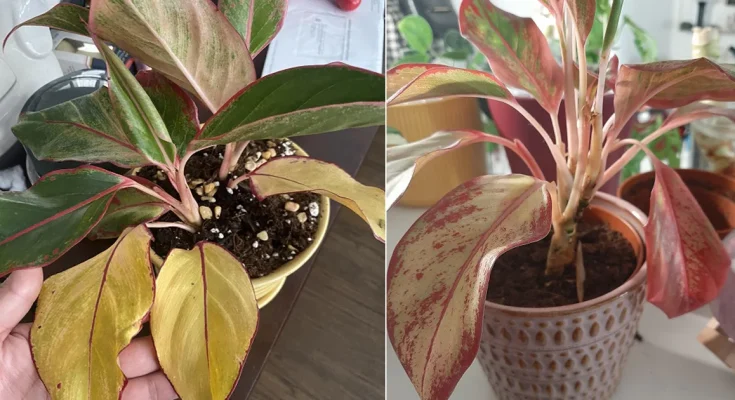If you have a Chinese Evergreen that’s troubling you with growth issues – here are the solutions for all Aglaonema Problems!
Though aglaonemas are not that fussy, they do have their fair share of problems. Here are the tips and tricks to keep Chinese Evergreens trouble-free
Aglaonema Problems and Solutions
1. Wilting, Curling, and Droopy Leaves
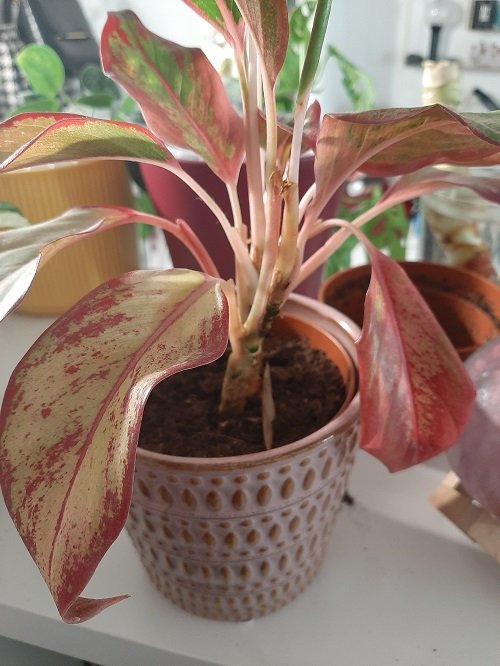
If your beautiful Chinese evergreen appears to dangle down from all sides, with leaves looking like they had a recent break-up, well, it is because you have watered it way too much, or have exposed it to too hot or cold environment, my friend!
Solution: Regularly check the soil – when the top part feels dry, it is time to water. Keep the plant away from AC or heating vents – place it in an environment with a stable, room temperature.
2. Yellow, Brown, or Crispy Foliage
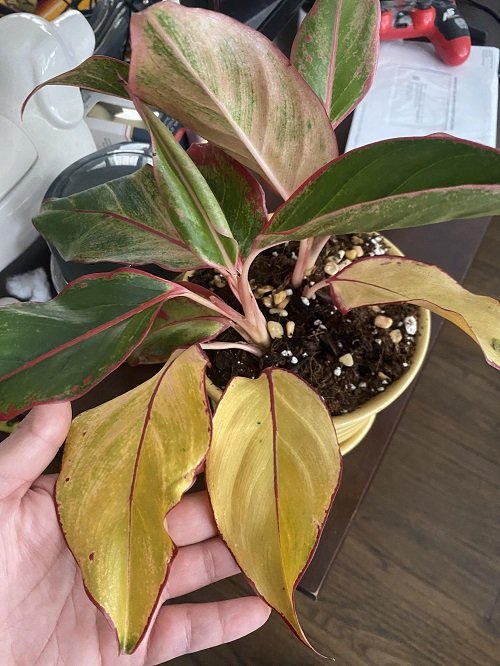
Aah! There’s no sight like watching aglaonema leaves shining in all their colorful glory – but what if you start to witness brown, crisp, and worn out foliage? Well, it will surely make you have a mini heart attack!
This can be due to under watering and excessive sun exposure. Remember, no direct light (especially afternoon) for long hours for these beauties!
Solution: Water when the soil feels dry on the top few inches, but don’t let it get too dry (cracks on the surface). Also, aim for moderate, indirect light.
3. Leaf Spots
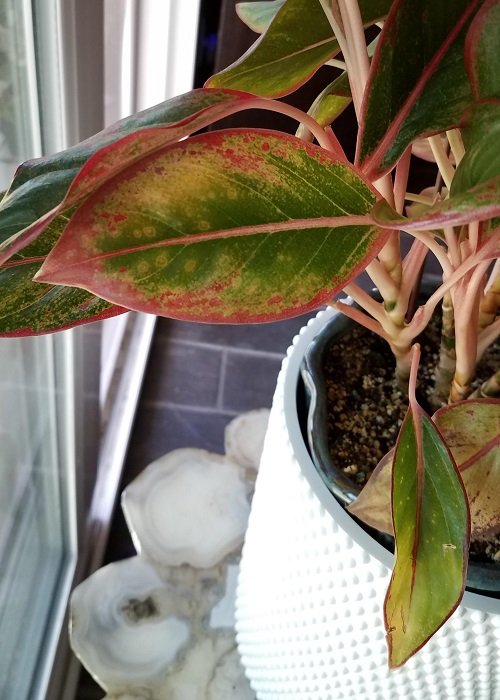
Spots on its leaves sticking out like a sore thumb? I can understand. These fungus and bacteria can turn artists of a bad kind, ‘painting’ the foliage with ugly markings.
Mineral laden water can also make the foliage appear as if it has been white spray painted by a mischievous kid on the loose.
Remember, before you water the plant, keep it overnight to let those minerals settle down to prevent white spots on the leaves. The best bet – use RO water.
Solution: Avoid wetting the foliage! Opt for a fungicide for severe infections – follow product instructions.
4. Slow and Stunted Growth
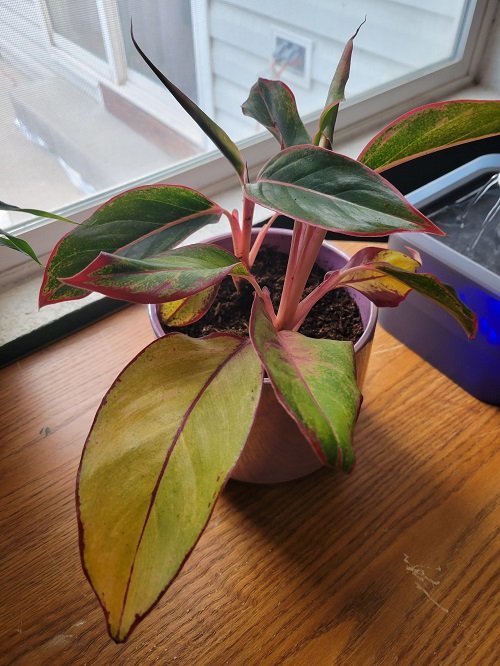
These plants grow at their own slow pace, but they aren’t no tortoises either. So, if you notice aglaonemas growing like one of the world’s slowest animals – it’s time to retrospect!
A poor quality growing medium might be at fault here – use a right one!
I hate spider mites and mealybugs – Chinese evergreens hate them, too. Make sure they are never near each other. The slow growth might also be due to overcrowding of roots.
Solution: Combine 50% peat moss or coco peat, 20% perlite, 20% pine bark, and 10% worm castings. More perlite can be added in humid conditions to improve drainage. Check if the roots are coming out of the topsoil or drainage holes – if they are, re-pot the plant in one size bigger container than the old one.
5. Faded Leaves

The beauty of these plants lies in their leaves – the brighter and the more colorful they are – the better you will feel everyday of being its parent!
So, if you notice the foliage getting faded – that’s because they have accumulated too much dirt on their surface. It can also be because you put the plant in a dimly lit spot to save it from excessive sunlight – well, don’t do that!
Solution: Wipe the leaves every 2-3 weeks using a damp and soft cotton cloth with 4 to 5 drops of milk – it will help Chinese evergreens to regain their shining glory! Also, 2-3 hours of mild morning sun exposure (direct) will be a godsend for the plant.
